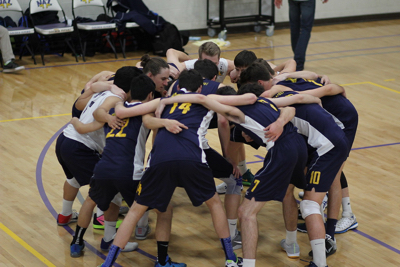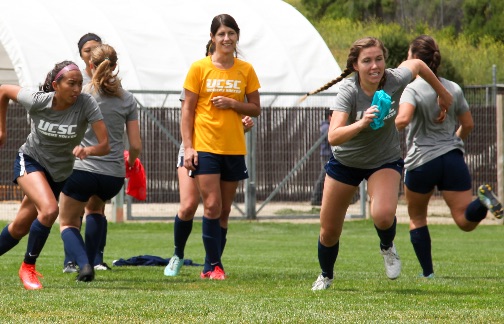UC Santa Cruz students will vote this spring on a fee that would provide the intercollegiate athletics program with a sustainable funding model and provide access to athletic-related activities to students who meet the Educational Opportunity Programs criteria.
The Office of Physical Education, Recreation, and Sports is proposing a $38.50 -per-quarter fee, which if approved would provide the NCAA Division III program with approximately $1.1 million beginning in fall 2017. Approximately $160,000 would be generated to support athletic activities of student who meet EOP criteria, approximately 40 percent of the student body.
The referendum’s authors are trying to build support across campus for the fee. To date, they’ve received sponsorship from the Student Union Assembly and five colleges.
Students will vote in May. If approved, the fee would sunset in spring 2042.
Andrea Willer, executive director for the Office of Physical Education, Recreation, and Sports, said the new business model was developed in collaboration with students, faculty, staff, alumni, and campus supporters.
“This collaboration enabled us to involve and engage the campus in ways we were not able to in the past,” Willer said. “This campuswide dialogue has not only informed and shaped the new business model but has also validated the multiple benefits intercollegiate athletics can bring to the greater campus community.”
The business model and fee proposal were developed by OPERS and Paul Simpson, an alumnus who played intercollegiate basketball and has a background in business. It comes as two committees—one commissioned by the Academic Senate and one of alumni and foundation board members—extensively researched the topic and issued separate reports. Both committees, among many recommendations, asked that the campus consider every reasonable measure to keep the intercollegiate athletics program, which started in 1981.
The current program consists of 15 men and women’s teams, which have about 300 students on the rosters. The average GPA well exceeds the campus average and the program boasts a 100 percent academic retention rate for the past five years. The teams have gone on to compete in championships and students have received scholar-athlete honors.
“The realities of financing collegiate athletic programs has changed tremendously over the years,” Simpson said. “This requires universities to innovate new business models that can generate significantly more revenue while controlling costs and limiting students’ financial burden.
“We believe the business model we have developed will put the NCAA on sound footing, while only requiring a quarterly fee of $38.50.”
Despite all the success on the field, the intercollegiate athletics program has been grappling with a deficit for the past several years, and campus leaders have asked that a sustainable funding model be developed that reduces the reliance on central campus funds. The program costs roughly $2.2 million with coach and trainer salaries (72 percent) and travel (16 percent) being the most significant expenses.
The new business model proposes the new fee; anticipates an ongoing campus contribution of $500,000 per year; and anticipates growing revenue from licensing and fundraising.
Last year, UC Santa Cruz students showed strong support for the intercollegiate athletics’ program, with 63 percent of voting undergraduates signaling that they would be willing to establish a new fee. A record 43 percent of undergraduate students cast ballots.
The Academic Senate’s Special Committee on Athletics submitted its report at the March 8 meeting at the Stevenson Event Center.
"Our committee finds that the NCAA athletics program at UC Santa Cruz provides significant benefits to a wide range of student, campus, alumni, and off-campus communities and recommends that the university make every reasonable effort to maintain this program,” said Professor J. Xavier Prochaska, who chaired the committee. “We believe that, in addition to the student fee proposed in the referendum, the costs of the program must be shared by actively pursuing available funding from outside sources and by the central campus.”




